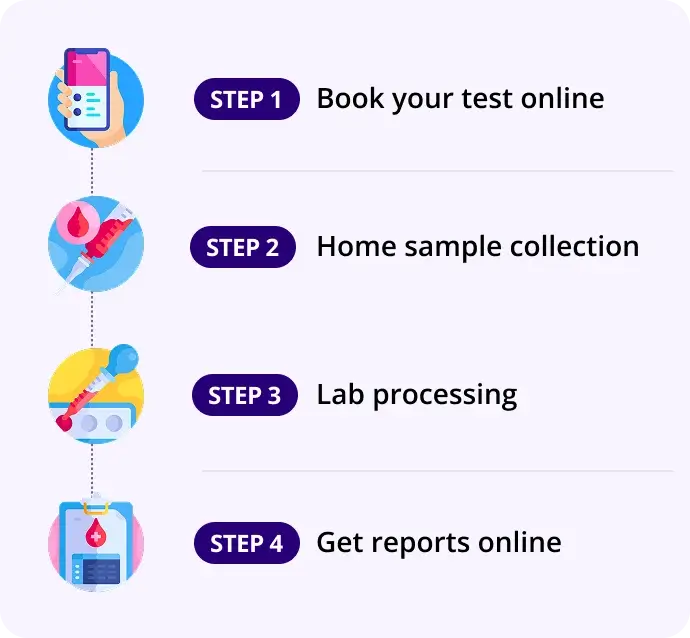Eosinophils-Absolute Count
Report in 16Hrs
At Home
No Fasting Required
Details
Eosinophils Absolute Count measures the actual number of eosinophils (a type of white blood cell) in a microliter (μL) of blood
₹99₹200
51% OFF
🧪 What is Eosinophils Absolute Count?
Eosinophils Absolute Count measures the actual number of eosinophils (a type of white blood cell) in a microliter (μL) of blood.
- Eosinophils play a key role in allergic responses, parasitic infections, and some autoimmune or inflammatory conditions.
- This test provides a more accurate assessment than just the eosinophil percentage in a CBC (Complete Blood Count).
❓ Why is the Eosinophils Absolute Count Done?
To:
- Evaluate allergic conditions (asthma, hay fever, eczema)
- Diagnose parasitic infections
- Monitor drug reactions or autoimmune diseases
- Assess hypereosinophilic syndrome
- Investigate unexplained symptoms such as rash, cough, or inflammation
📊 Normal Range
Parameter | Normal Range |
|---|---|
Eosinophils Absolute Count | 30 – 350 cells/μL (may vary slightly by lab) |
🧬 How is it Calculated?
Absolute Eosinophil Count = Total WBC count × (% eosinophils ÷ 100)
Example:
If WBC = 8,000 cells/μL and eosinophils = 4% →
Absolute eosinophils = 8000 × 0.04 = 320 cells/μL
📈 Interpretation of Results
Count | Interpretation |
|---|---|
<30 cells/μL | Low – Rarely clinically significant; may occur in corticosteroid use or bone marrow suppression |
30–350 cells/μL | Normal |
>350 cells/μL | Mild eosinophilia – usually allergic or minor parasitic condition |
>1,500 cells/μL | Marked eosinophilia – may indicate eosinophilic disorders, severe allergy, parasitic or autoimmune disease |
>5,000 cells/μL | Risk of organ damage from hypereosinophilic syndrome |
🧠 Associated Organs and Conditions
System/Organ | Conditions Linked to High Eosinophils |
|---|---|
Respiratory (lungs) | Asthma, allergic rhinitis, eosinophilic pneumonia |
GI tract | Parasitic infections, eosinophilic esophagitis |
Skin | Eczema, urticaria, dermatitis herpetiformis |
Blood/Immune | Hypereosinophilic syndrome, autoimmune diseases, some leukemias |
Drugs | Drug reaction with eosinophilia (DRESS syndrome), penicillin allergy |
🔄 Related / Follow-Up Tests
- CBC with differential – To assess all white cells
- Serum IgE levels – Elevated in allergy or parasitic conditions
- Stool test for ova & parasites – For parasitic infection
- Allergy panel (skin prick or blood IgE)
- ANA or ENA panel – For autoimmune diseases
- Chest X-ray or CT scan – If lung involvement suspected
- Bone marrow biopsy – In persistent or unexplained eosinophilia
- FIP1L1-PDGFRA gene test – If hypereosinophilic syndrome suspected
📝 Summary
Parameter | Summary |
|---|---|
What | Measures the number of eosinophils in blood per μL |
Why | To evaluate allergic conditions, parasitic infections, autoimmune or eosinophilic disorders |
Normal Range | 30 – 350 cells/μL |
High Count | Suggests allergy, parasitic infection, autoimmune disease, or eosinophilic syndromes |
Low Count | Usually not clinically significant |
Follow-up | CBC, IgE, allergy panel, parasitic tests, imaging, or genetic studies (if needed) |
How our test process works!

